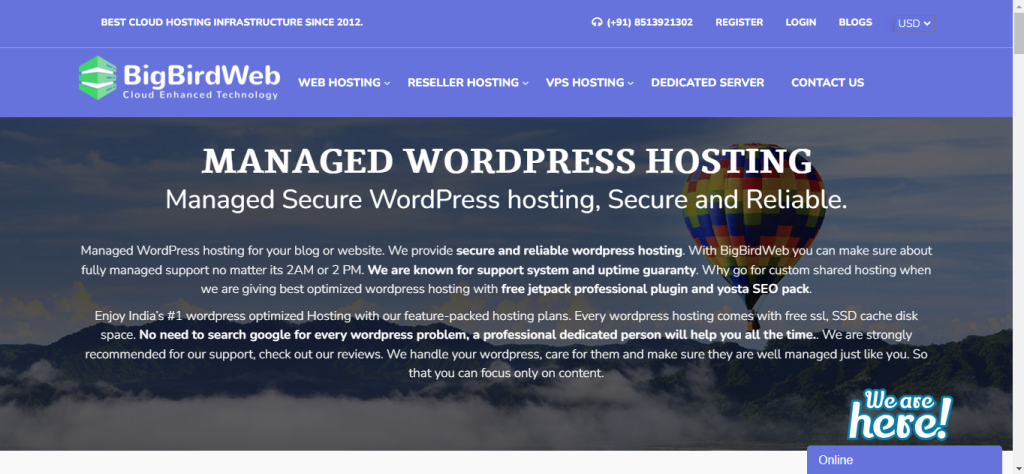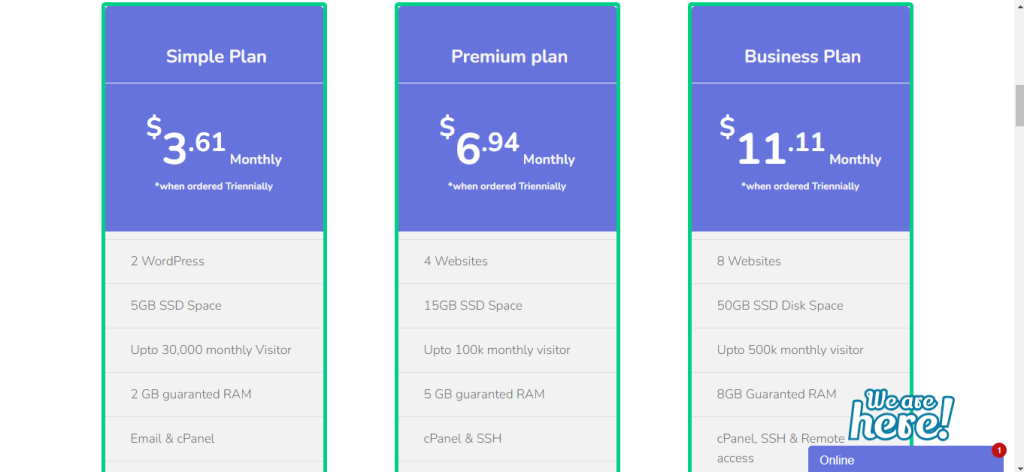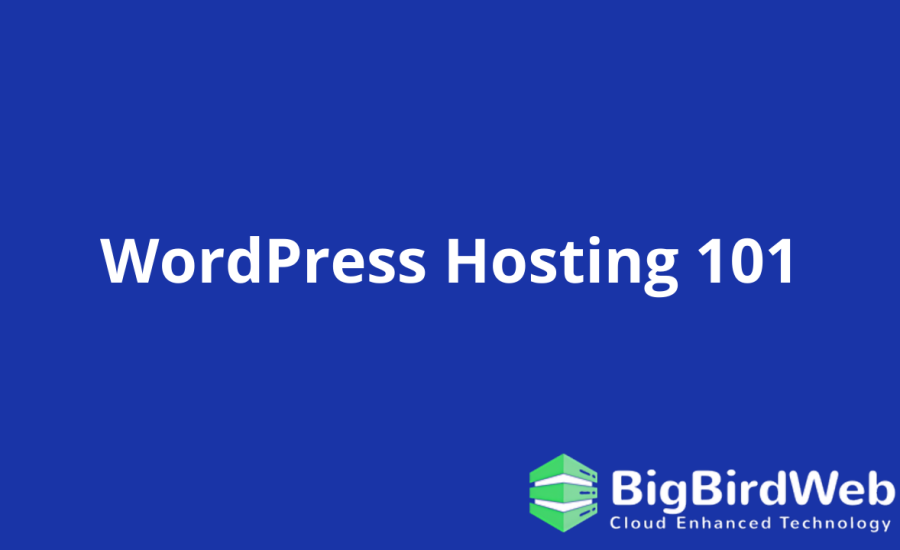In the realm of WordPress hosting, speed and performance are paramount. As websites become more complex and user expectations rise, traditional hosting solutions often struggle to keep up. Enter edge computing—a revolutionary technology that promises to enhance the speed and performance of Managed WordPress hosting like never before. In this comprehensive guide, we will delve into how edge computing is transforming the landscape of WordPress hosting and what it means for the future of your website.

Table of Contents
Understanding Edge Computing
Before we dive into the specifics of how edge computing enhances WordPress hosting, it’s essential to understand what edge computing is. At its core, edge computing involves processing data closer to where it is generated rather than relying on a centralized data center. This proximity reduces latency, improves speed, and enhances overall performance.
Traditional web hosting relies on centralized servers located in data centers that might be far from the end-users. This distance can cause delays, especially when users are geographically dispersed. Edge computing solves this problem by placing servers—known as edge servers—closer to the users, thereby reducing the distance data must travel and significantly improving load times.
The Impact of Edge Computing on WordPress Hosting

The integration of edge computing into WordPress hosting brings about several notable improvements. Here’s how edge computing is making a difference:
- Reduced Latency: By processing data closer to the end-user, edge computing minimizes the time it takes for data to travel back and forth between the user and the server. This reduction in latency results in faster load times for WordPress websites.
- Enhanced Performance: With edge servers handling a significant portion of the processing load, the central servers experience less strain. This leads to improved performance and reliability of WordPress hosting services.
- Scalability: Edge computing makes it easier to scale WordPress hosting solutions. As traffic grows, additional edge servers can be deployed to handle the increased load without compromising performance.
- Improved User Experience: Faster load times and reliable performance translate to a better user experience. Visitors to WordPress websites are less likely to encounter slowdowns or disruptions, which can enhance engagement and reduce bounce rates.
How Edge Computing Works in WordPress Hosting
To fully appreciate the benefits of edge computing in WordPress hosting, it’s helpful to understand how this technology is implemented. Here’s a closer look at the process:
- Content Delivery Networks (CDNs): Edge computing is often integrated with CDNs. These networks consist of geographically distributed servers that cache and deliver content to users based on their location. When a user requests a WordPress webpage, the CDN delivers the content from the nearest edge server, reducing latency and improving load times.
- Edge Caching: Edge servers cache static content such as images, CSS files, and JavaScript. This means that when a user requests a WordPress webpage, the server can quickly deliver the cached content without needing to fetch it from the central server, resulting in faster response times.
- Load Balancing: Edge computing includes sophisticated load balancing techniques. Traffic is distributed across multiple edge servers to ensure no single server is overwhelmed. This balance enhances the reliability and performance of WordPress hosting.
- Dynamic Content Acceleration: Edge computing can also optimize dynamic content delivery. By performing certain processing tasks at the edge, such as handling user-specific data or executing scripts, the central server’s load is reduced, and dynamic content is delivered more swiftly.
Benefits of Edge Computing for WordPress Hosting
The adoption of edge computing in WordPress hosting offers numerous benefits. Here are some of the most significant advantages:
- Speed: Faster load times are perhaps the most noticeable benefit. Edge computing ensures that content is delivered quickly, regardless of the user’s location, providing a seamless browsing experience.
- Reliability: By distributing the load across multiple servers, edge computing reduces the risk of downtime. If one server fails, others can take over, ensuring continuous availability of your WordPress website.
- Security: Edge servers can provide an additional layer of security. They can filter out malicious traffic and prevent DDoS attacks before they reach the central server, protecting your WordPress site from potential threats.
- Cost Efficiency: By offloading processing tasks to edge servers, central servers can operate more efficiently. This optimization can lead to cost savings, as fewer resources are needed to maintain high performance. You can also opt for free web hosting.
- Global Reach: Edge computing enables your WordPress website to perform well globally. Users from different parts of the world can access your site with minimal latency, expanding your reach and improving user satisfaction.
Real-World Applications of Edge Computing in WordPress Hosting
To illustrate the impact of edge computing on WordPress hosting, let’s look at some real-world applications and case studies:
- E-Commerce Websites: E-commerce sites require fast load times and reliable performance to ensure a smooth shopping experience. Edge computing helps by delivering content swiftly and handling spikes in traffic during sales or promotions. For example, an online retailer using edge computing can ensure that product images, descriptions, and checkout pages load quickly, reducing cart abandonment rates.
- Media-Rich Websites: Websites with heavy multimedia content, such as videos and high-resolution images, benefit significantly from edge computing. By caching and delivering this content from edge servers, users experience faster load times and smoother playback. A news website, for example, can use edge computing to deliver breaking news videos and images quickly to its global audience.
- Global Enterprises: Large organizations with a global presence need their WordPress websites to perform well across different regions. Edge computing allows these companies to deliver content locally, improving speed and performance for international users. A multinational corporation can ensure that its regional websites load quickly and provide a consistent user experience worldwide.
- Educational Platforms: Online learning platforms hosting courses and resources on WordPress can leverage edge computing to provide students with fast and reliable access to educational materials. By caching course content and delivering it from nearby servers, students experience minimal delays, enhancing their learning experience.
Future Trends in WordPress Hosting with Edge Computing

The integration of edge computing in affordable WordPress hosting is just the beginning. As technology continues to evolve, we can expect even more advancements and innovations. Here are some future trends to watch for:
- AI and Machine Learning Integration: AI and machine learning can be integrated with edge computing to enhance performance further. For example, AI algorithms can predict traffic patterns and adjust resource allocation dynamically, ensuring optimal performance even during unexpected spikes.
- Edge Functions: Edge computing will enable more complex processing at the edge. Edge functions allow developers to run code closer to the user, reducing latency and improving the responsiveness of WordPress websites. This can be particularly beneficial for real-time applications such as live chat or interactive features.
- IoT and Edge Computing: The Internet of Things (IoT) will benefit from edge computing, as it allows for faster data processing and reduced latency. WordPress hosting can leverage this by integrating IoT devices to provide personalized user experiences and real-time updates.
- Enhanced Security Protocols: As cyber threats become more sophisticated, edge computing will play a crucial role in enhancing security. Edge servers can implement advanced security measures such as encryption and threat detection to protect WordPress websites from emerging threats.
- 5G and Edge Computing: The rollout of 5G networks will complement edge computing, providing even faster and more reliable connectivity. WordPress websites will benefit from the combined power of 5G and edge computing, delivering unparalleled speed and performance.
Implementing Affordable Edge Computing in WordPress Hosting

For businesses looking to implement edge computing in their WordPress hosting environment, here are some practical steps to get started:
- Evaluate Your Needs: Assess your website’s requirements, including traffic patterns, content types, and user locations. Determine how edge computing can address your specific needs and enhance performance.
- Choose a CDN Provider: Partner with a reputable CDN provider that offers edge computing capabilities. Look for features such as global coverage, robust security measures, and easy integration with WordPress.
- Optimize Content Delivery: Leverage the CDN to cache static content and deliver it from edge servers. Optimize your WordPress website to take full advantage of edge caching, ensuring that frequently accessed content is readily available.
- Monitor Performance: Continuously monitor the performance of your WordPress website using analytics tools. Track metrics such as load times, latency, and server response times to measure the impact of edge computing.
- Iterate and Improve: Based on performance data, make adjustments to your edge computing strategy. Optimize configurations, update content delivery rules, and ensure that your website remains fast and reliable.
Challenges and Considerations
While the benefits of edge computing in WordPress hosting are significant, it’s important to be aware of potential challenges and considerations:
- Complexity: Implementing edge computing can add complexity to your hosting environment. It requires careful planning and configuration to ensure seamless integration with your existing infrastructure.
- Cost: While edge computing can lead to cost savings in the long run, there may be initial expenses associated with setting up and maintaining edge servers. It’s essential to weigh these costs against the benefits.
- Data Privacy: Storing and processing data at the edge may raise privacy concerns, especially if data is handled in multiple jurisdictions. Ensure compliance with data protection regulations and implement robust security measures.
- Dependency on CDN Providers: Relying on CDN providers for edge computing services means entrusting a third party with critical aspects of your website’s performance. Choose a reliable provider and establish clear service level agreements
Bonus Content: Next-Gen WordPress Hosting: How Edge Computing is Enhancing Speed and Performance
In the realm of WordPress hosting, edge computing is emerging as a game-changer, revolutionizing the way websites are delivered and experienced by users. By processing data closer to the end-user, edge computing significantly enhances the speed and performance of WordPress sites. Here’s how this cutting-edge technology is transforming WordPress hosting.
Understanding Edge Computing
Edge computing refers to the practice of processing data near the source of data generation, rather than relying on centralized data centers. This decentralization reduces latency, minimizes bandwidth usage, and ensures faster data processing and delivery. In the context of WordPress hosting, edge computing involves deploying content and applications to edge servers located geographically closer to users.
Benefits of Edge Computing in WordPress Hosting
- Reduced Latency
By processing requests at the edge of the network, closer to the user’s location, edge computing significantly reduces latency. This means that users experience faster load times, which is crucial for maintaining engagement and reducing bounce rates on your WordPress site. - Improved Reliability
Edge computing enhances the reliability of your WordPress hosting by distributing data across multiple edge locations. If one server encounters an issue, traffic can be rerouted to another nearby edge server, ensuring that your site remains accessible and operational even during localized outages. - Enhanced Scalability
With edge computing, your WordPress site can handle high traffic volumes more efficiently. Edge servers can balance the load, distributing requests across multiple locations and preventing any single server from becoming overwhelmed. This scalability is especially beneficial for high-traffic sites and during peak usage times. - Optimized Content Delivery
Edge computing leverages Content Delivery Networks (CDNs) to cache static content like images, videos, and scripts closer to users. This optimized content delivery not only speeds up page load times but also reduces the burden on your origin server, improving overall site performance. - Better Security
Edge servers can provide an additional layer of security for your WordPress hosting. They can filter malicious traffic, prevent DDoS attacks, and manage SSL encryption, ensuring that threats are mitigated before they reach your primary server. This proactive security approach protects your site and enhances user trust. - Real-Time Data Processing
For dynamic WordPress applications that require real-time data processing, edge computing can perform computations at the edge. This means faster processing of user interactions, real-time analytics, and instant updates, providing a seamless and interactive user experience.
Implementing Edge Computing in WordPress Hosting
To take advantage of edge computing in your WordPress hosting setup, consider the following steps:
- Choose a Hosting Provider with Edge Capabilities
Select a WordPress hosting provider that offers edge computing as part of their service. Providers like Kinsta, Cloudways, and WP Engine are known for incorporating edge technology into their hosting solutions. - Leverage a CDN
Integrate a CDN into your WordPress site to distribute content across multiple edge locations. Popular CDNs like Cloudflare, Akamai, and Fastly provide extensive networks of edge servers, ensuring global coverage and optimal performance. - Optimize Your Site for Edge Delivery
Ensure that your WordPress site is optimized for edge delivery by minimizing file sizes, using caching plugins, and enabling compression. This helps maximize the benefits of edge computing by reducing the amount of data that needs to be transferred. - Monitor Performance and Adjust
Use performance monitoring tools to track the impact of edge computing on your site. Adjust configurations and optimize settings based on insights gained from these tools to continually enhance your site’s speed and performance.
Future of WordPress Hosting with Edge Computing
As edge computing technology continues to evolve, its integration with WordPress hosting will become more seamless and sophisticated. We can expect advancements in the following areas:
- AI-Driven Optimization
Artificial intelligence will play a significant role in optimizing edge computing for WordPress hosting. AI algorithms can predict traffic patterns, dynamically allocate resources, and automate performance enhancements, ensuring that your site is always operating at peak efficiency. - Expanded Edge Networks
The expansion of edge networks will bring even greater coverage and redundancy. This will further reduce latency and improve reliability, providing a consistently fast and secure experience for users worldwide. - Edge-Based Application Development
Developers will increasingly build applications that are designed to run directly on edge servers. This will enable more complex and interactive WordPress sites that leverage the full potential of edge computing for real-time data processing and immediate responsiveness. - Greater Integration with IoT
As the Internet of Things (IoT) grows, edge computing will become essential for managing the massive amounts of data generated by connected devices. WordPress hosting solutions will need to accommodate these IoT applications, providing the necessary infrastructure to process and deliver data efficiently.
By embracing edge computing, WordPress hosting providers and site owners can significantly enhance the performance, scalability, and security of their websites. This next-generation technology is poised to set new standards for website speed and user experience, ensuring that WordPress remains a leading platform for creating and managing online content.
Extended FAQs
How does edge computing differ from traditional CDN services?
While both edge computing and traditional CDN services aim to improve website performance by reducing latency, they operate differently. Traditional CDNs focus on caching static content like images, videos, and scripts at various locations closer to the user. Edge computing, on the other hand, extends this concept by also processing dynamic content and applications at the edge. This means not only static assets are delivered faster, but dynamic operations like database queries and computations are also handled near the user, resulting in even greater performance improvements.
Can I use edge computing with any WordPress theme or plugin?
Yes, edge computing can be used with any WordPress theme or plugin. However, to fully leverage its benefits, it’s important to optimize your site for edge delivery. This includes minimizing file sizes, using caching plugins, and enabling compression. Additionally, some plugins may offer specific integrations with edge computing and CDN services, enhancing their performance even further.
